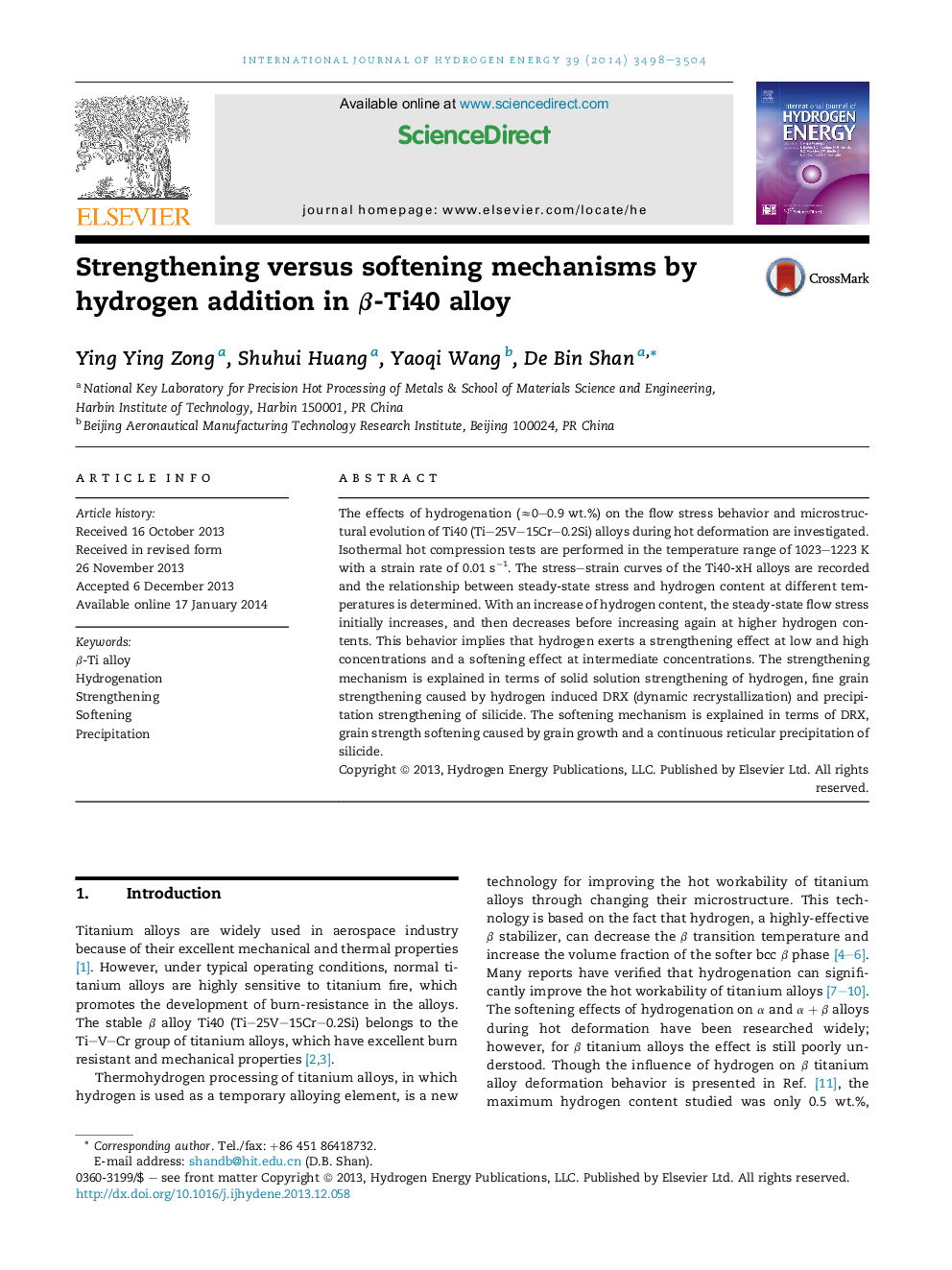| Article ID | Journal | Published Year | Pages | File Type |
|---|---|---|---|---|
| 1270655 | International Journal of Hydrogen Energy | 2014 | 7 Pages |
•Flow stress increases, then decreases, and then increases with H content rising.•Hydrogenation improves DRX of β grains, Ti5Si3 precipitation and grain growth.•Fine grain, solid solution and silicide precipitation cause strengthening.•DRX, grain growth and continuous reticular silicide precipitation cause softening.
The effects of hydrogenation (≈0–0.9 wt.%) on the flow stress behavior and microstructural evolution of Ti40 (Ti–25V–15Cr–0.2Si) alloys during hot deformation are investigated. Isothermal hot compression tests are performed in the temperature range of 1023–1223 K with a strain rate of 0.01 s−1. The stress–strain curves of the Ti40-xH alloys are recorded and the relationship between steady-state stress and hydrogen content at different temperatures is determined. With an increase of hydrogen content, the steady-state flow stress initially increases, and then decreases before increasing again at higher hydrogen contents. This behavior implies that hydrogen exerts a strengthening effect at low and high concentrations and a softening effect at intermediate concentrations. The strengthening mechanism is explained in terms of solid solution strengthening of hydrogen, fine grain strengthening caused by hydrogen induced DRX (dynamic recrystallization) and precipitation strengthening of silicide. The softening mechanism is explained in terms of DRX, grain strength softening caused by grain growth and a continuous reticular precipitation of silicide.
